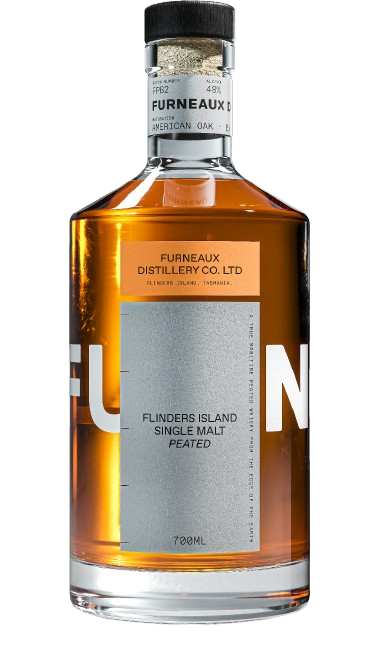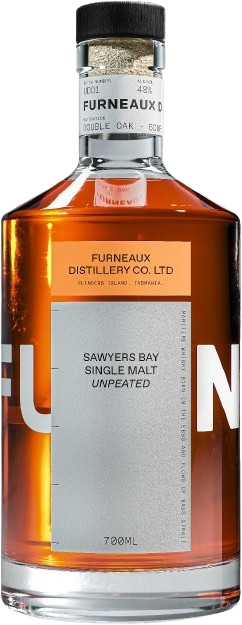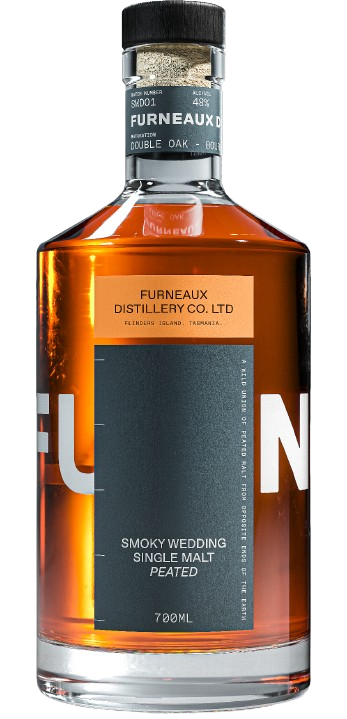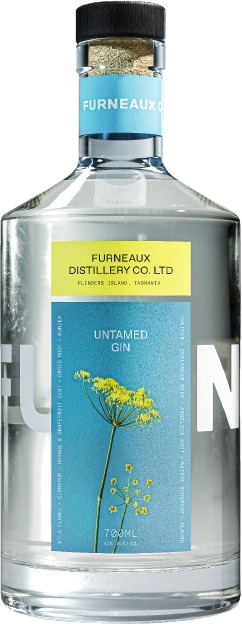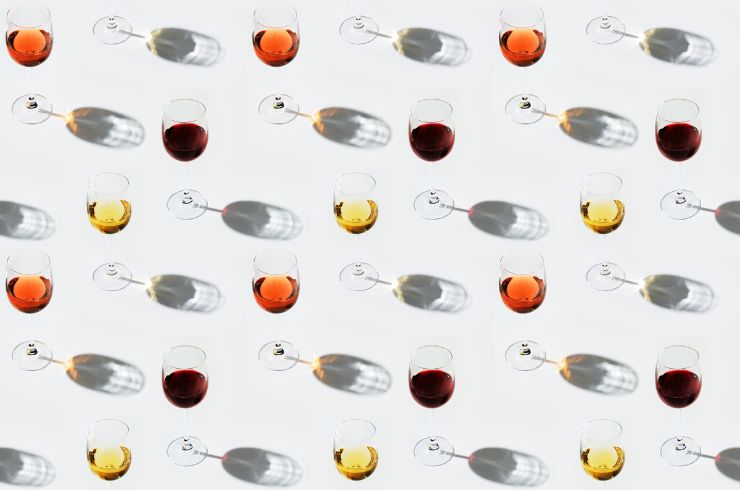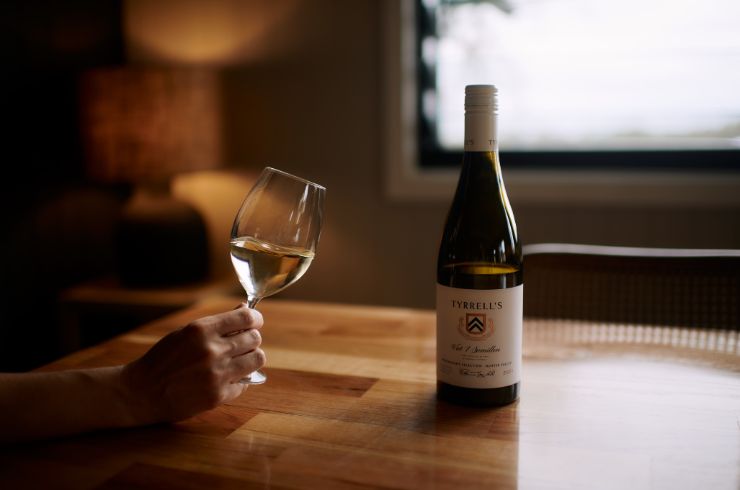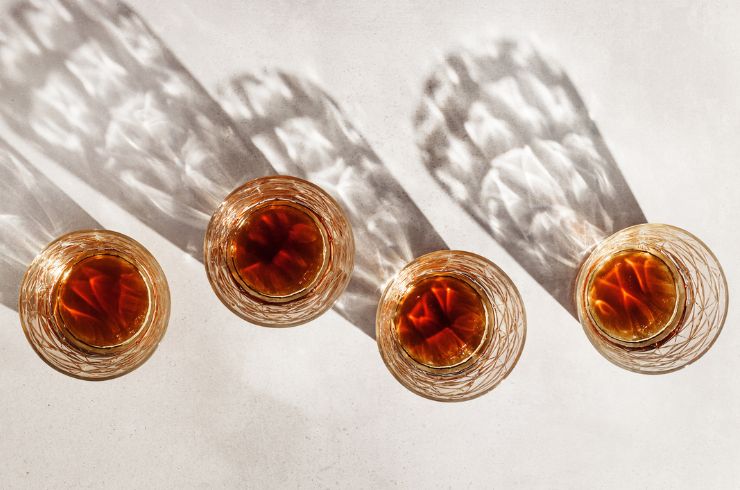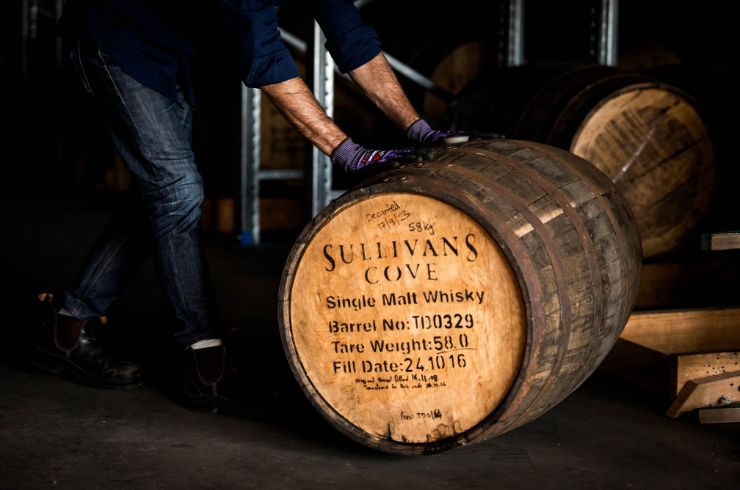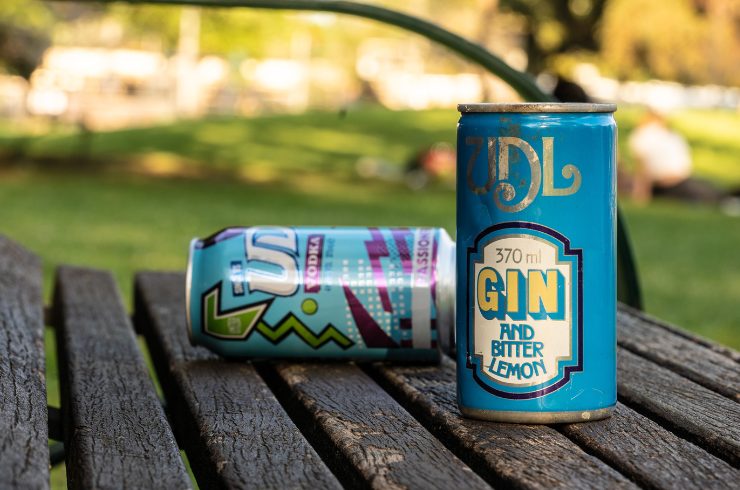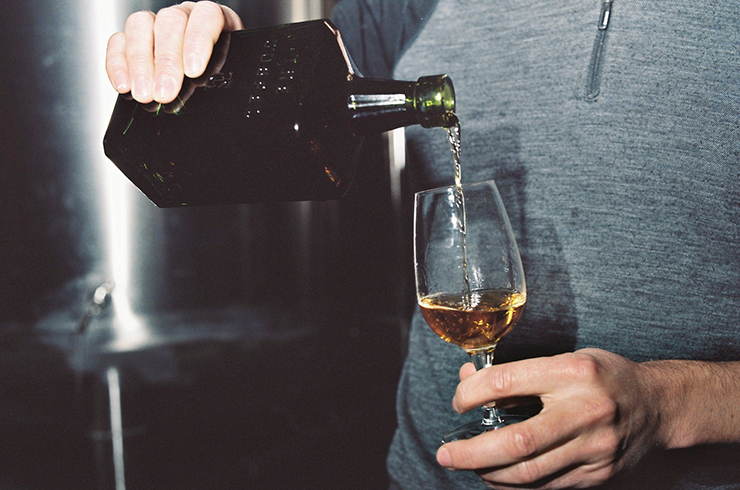The bone-grey granite of Flinders Island rises out of the truculent waters of Bass Strait, the hills mossed with the low, scrubby green of drooping sheoak. Wild, rugged, and incredibly beautiful, Flinders Island would seem the perfect place to make single malt to those of us romanced by tales of windswept Hebridean distilleries. Flinders has a lot in common with those craggy isles off the west coast of Scotland where some of the world’s most famous whiskies are made; fertile soil, coastal climate and an abundance of peat for smoking barley. The inspiration for making a uniquely Australian single malt here is easy to see.
That is, of course, until faced with the logistical nightmare of making a commercial product on a remote island with a population of 700. “If you need to replace a fitting on the stills,” says Furneaux’s head distiller Tom Ambroz, “you can’t just pop to Bunnings.”
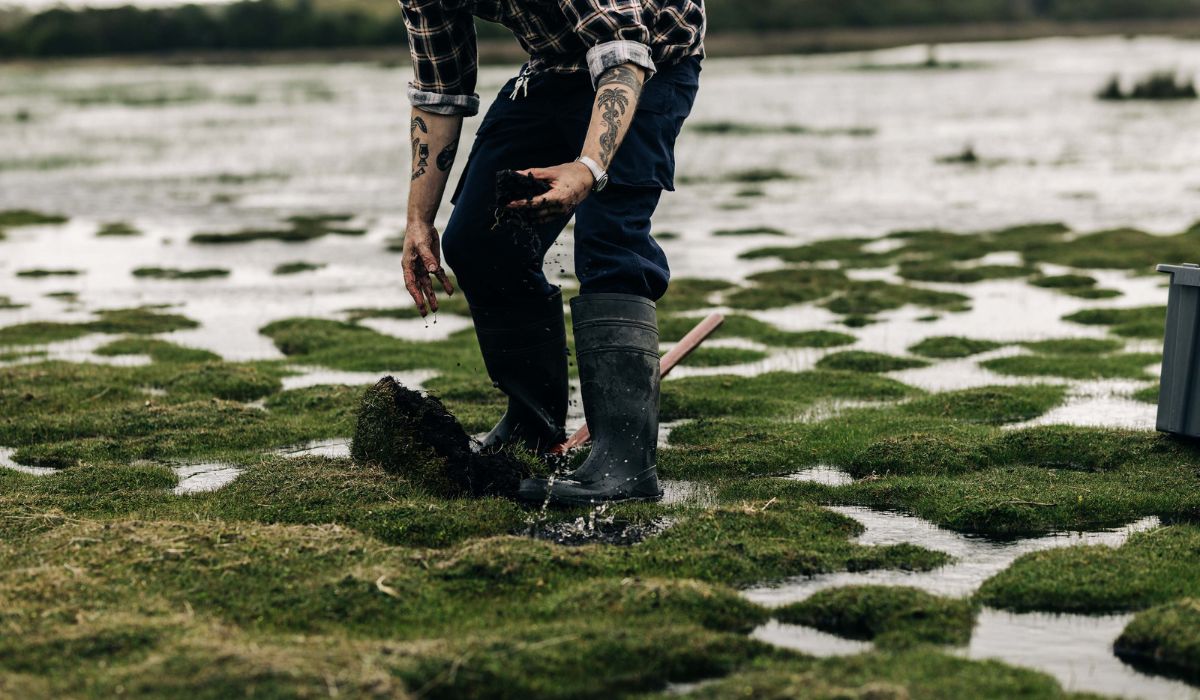
Tom grew up on mainland Tasmania, but cut his teeth in Melbourne’s bar scene before moving back in 2017 to spend time with family. He was working at the much-lauded Sullivans Cove Distillery outside of Hobart when the siren song of Flinders Island called. On his first visit for the Flinders Island Crayfish Festival that first year back in Hobart, Tom was smitten.
“I was flying in this tiny plane over the misty mountains and it all felt totally isolated and wild,” he recalls of that first trip. “We landed in what seemed like a random paddock at Killiecrankie and set up for a barbecue on the beach. These guys who had been out diving rocked up, overloaded with fresh crayfish and abalone. I had a bottle of Sullivans Cove with me so we all shared and got talking.”
Those guys, it turned out, were Damian Newton Brown and Howard McCorkell, founders of Furneaux Distillery. Both had been coming to Flinders since they were kids, and had just commissioned distilling equipment to establish their whisky production site, inspired by the abundance of coastal peat on Flinders and their love of Islay-style Scotch single malt. But they still needed a distiller.
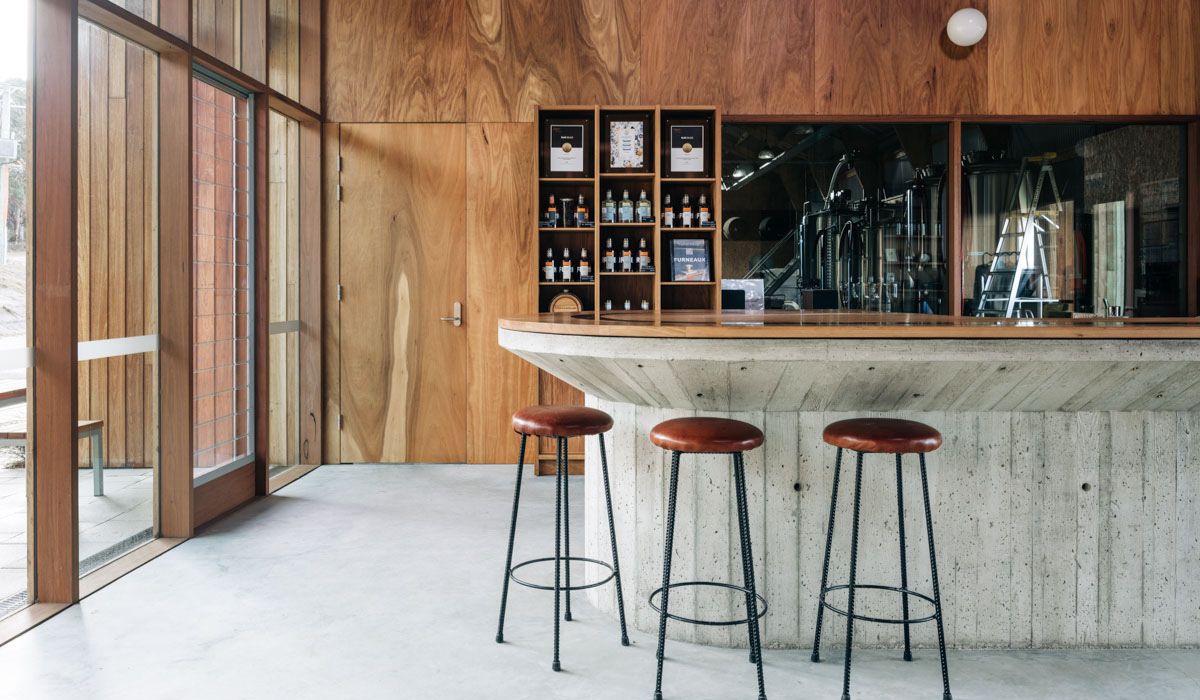
“After that trip,” says Tom, “Flinders was under my skin. I couldn’t get over the idea, and so six months later I moved there to take on the role of head distiller for Furneaux.” The first spirit ran from the stills in 2019, and their first bottling of whisky was released in 2022. From that first batch, even though it was made with barley grown and fermented on the big island, there was something unique about Furneaux.
The Flinders Island peat Furneaux use for smoking their grain comes from the brackish lagoons that dot the island, made up of native vegetation like tea tree and melaleuca – a far cry from the seaweed-salted peat of Islay or the mossy peat of the Tassie mainland employed in other single malts from the island. “We actually get the flavour of those native plants,” says Tom. "There’s this gentle, menthol note that’s really earthy, especially on the back palate, and has little of the aggressive iodine notes that often turn people off smoky Scotch."
Since then, Tom has been honing that character, trying to make a whisky that reflects its environment as much as possible. “I’ve been slowly trying to eliminate anything that doesn’t come from the island from the production process,” he says, “by using botanicals we can gather here for the gin, doing the brewing ourselves on site, and only using rainwater we can gather for the whole process.”
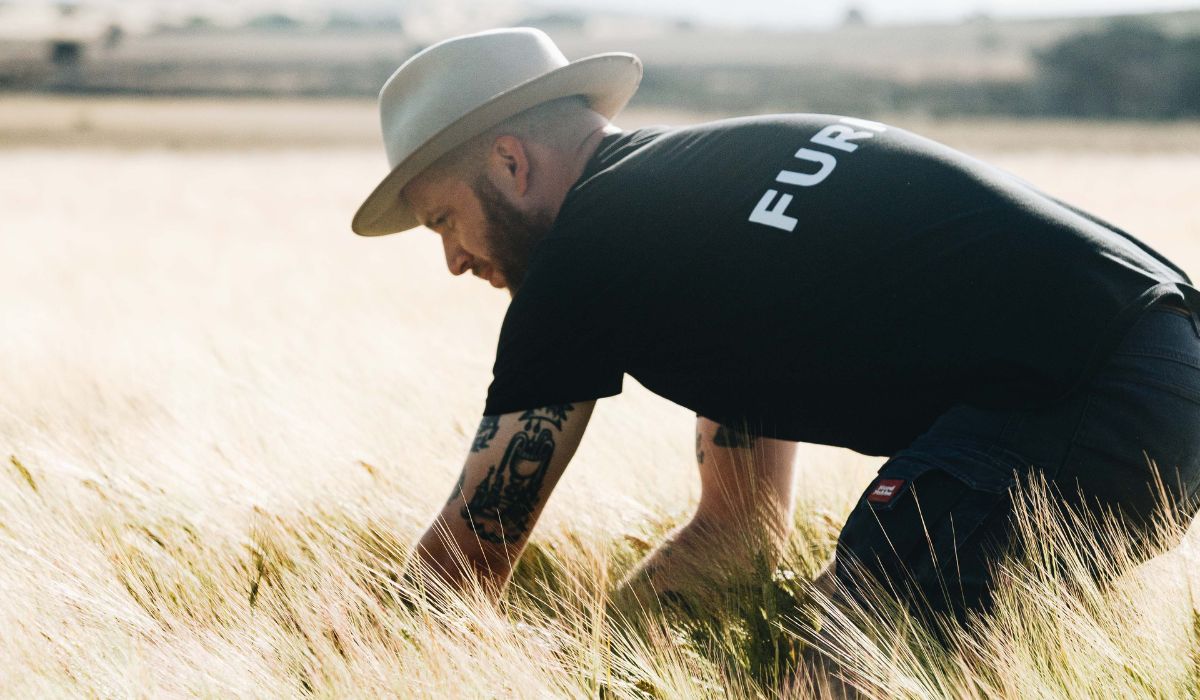
But perhaps most importantly, Furneaux are now growing their own grains on the island. Their first barley crop was planted in late 2023 along a 1.5km stretch of beachfront pasture with no expectations on how well it would grow in those windswept coastal conditions. “It grew so thick and so quickly,” says Tom. “It turns out the soil here is just perfect.”
This year, everything Furneaux distilled was 100 per cent Flinders Island-grown barley, which, with luck, will be ready to bottle in 2027. In the meantime, keep a lookout for soon-to-be-released special edition cask strength bottlings and many more good things from this young but already impressive and uniquely Australian distillery.
-
Furneaux spirits to try
-
Furneaux Distillery
Furneaux Distillery Flinders Island Peated Double Oak Whisky
-
Furneaux Distillery
Furneaux Distillery Sawyers Bay Unpeated Double Oak Whisky
-
Furneaux Distillery
Furneaux Distillery Smoky Wedding Peated Bourbon Cask Whisky
-
Furneaux Distillery
Furneaux Distillery Untamed Gin
Join Halliday Wine Club to drink the very best of Australian wine
Are you an explorer, enthusiast or collector? No matter the Halliday Wine Club plan you choose, each month we'll deliver two bottles of 95+ point wines direct to your door. From $89 per month. You can skip, pause or cancel anytime. Join now.
